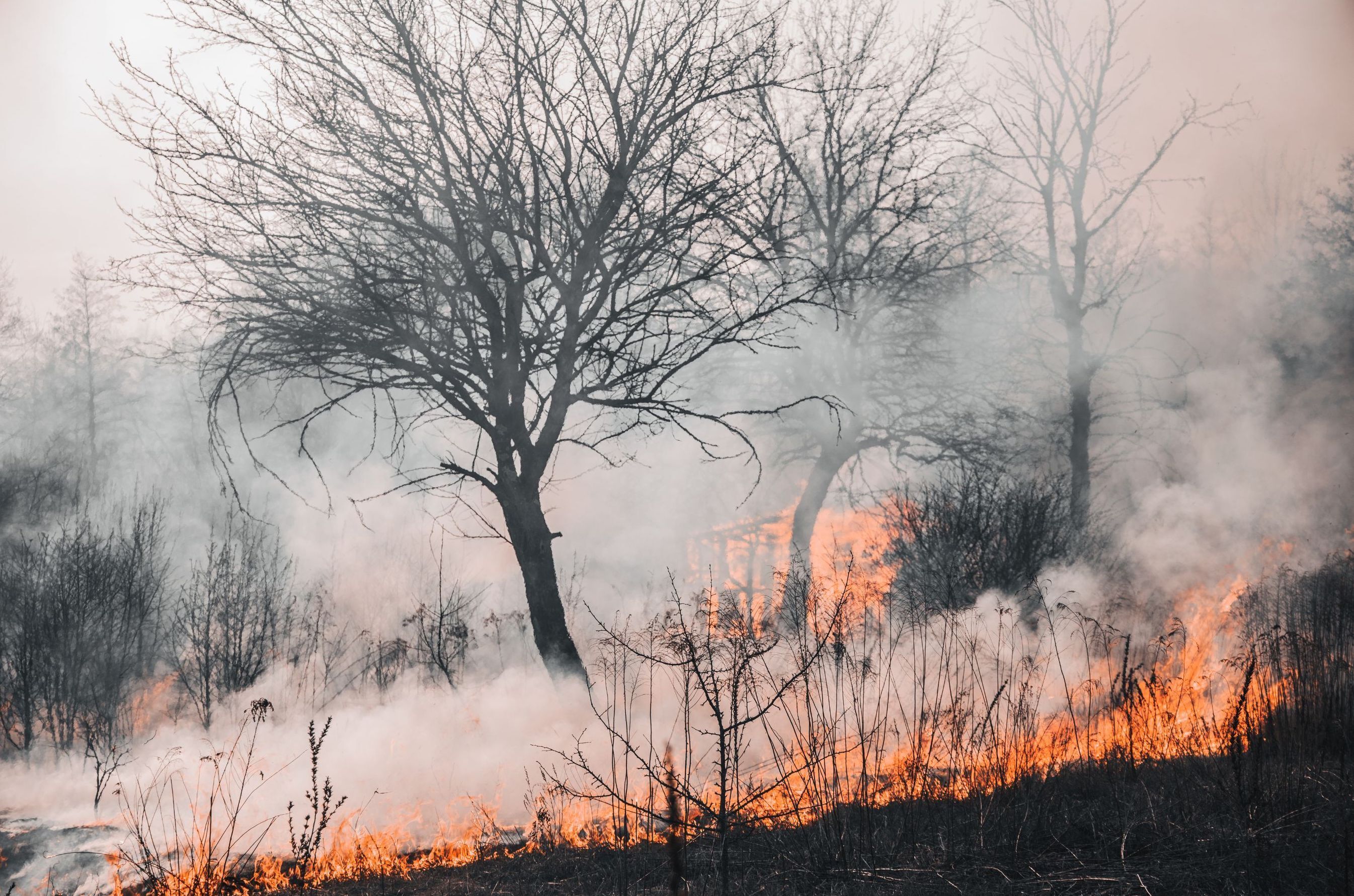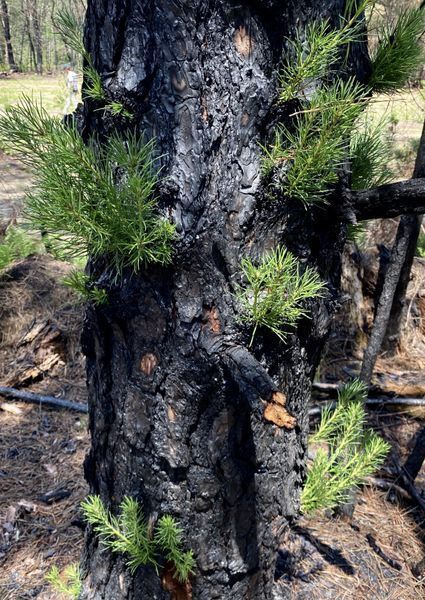
Published on August 24, 2023
Fire Ecology
By Dr. Scott Ruhren
A hard, gray cone from a pitch pine tree has been in my office for over 30 years. I collected it on a field trip through the New Jersey pinelands, a vast plant community shaped by fire. Most pinecones involuntarily open and drop their seeds as they dry out. This cone has remained glued shut for decades.
Ecologically, fire is a natural and regenerative disturbance in many natural areas, including those found in Rhode Island. Most grassland and forest fires are ignited by lightning or other natural causes, though some are a result of arson and human accidents.
A powerful evolutionary and ecological force, fire alters but does not destroy habitats. There are, however, balances and tradeoffs. Fire helps cycle nutrients, breaks down excess debris, and raises soil pH, which favors beneficial bacteria, suppresses diseases and helps to control invasive plants. If fires are too frequent or too intense, however, nutrients can be lost to erosion. Some species may die, and invading species may colonize openings. This is why conservationists track the aftermath of fires.
Historically, grasslands were burned annually in an effort to shape and maintain them. Though burning consumes a lot of nitrogen (a key nutrient), burned grasslands are productive because of reduced plant competition, suppression of woody and invasive species, and the release of nutrients back into the soil.
Forest fires are even more variable. Pine forests may naturally burn as frequently as 1 to 10 years. Through time, species in fire-prone forests have adapted to this disturbance. Many hardwood species, such as oaks, hickories, ash, and some maples, are susceptible to fire, and it affects their presence and numbers. Hardwoods increase while pines decrease when fire frequency is low.
Survival mechanisms of animals include fleeing, if possible, and hiding underground. Plants may survive safely as seeds in the soil, and some are even resistant to fire. Some plant seeds do not germinate until after a fire has moved through.
Pitch pine is a classic example of a fire-adapted species. This native tree thrives after fire, and in habitats that burn frequently, special adaptations have evolved. Its thick bark and well-protected buds allow this species to come back quickly. Cones of pitch pine in frequently burned forests often exhibit serotiny – this is when cones stay closed with natural resin until the glue melts, like the pine cone in my office. Seeds then flutter down to fertile bare ground left by the fire.
As science reveals more about fire, many agencies, including the US Forest Service, have changed their approaches and views of this disturbance over the past 50 years. Suppression of all fires may not be good policy, as habitats change and may lead to hotter fires. In recent years, Smokey Bear’s slogan changed from “prevent forest fires” to “prevent wildfires” or uncontrolled, severe fires.
Humans have been using fire as a land management tool for about half a million years. Indigenous people worldwide have used fire to clear land for crops and hunting. Land managers use fire to maintain rare native species. However, even carefully controlled burns are a challenge. Weather must be perfect, and public safety becomes more pressing as more humans live near managed landscapes.
Abundant wood and weather conditions combined with an igniter have led to recent fires in southern Rhode Island, and Canada has been severely impacted this summer. However, one must remember that fire is a vital part of many ecosystems, and climate change will likely exacerbate the effects of forest fires in some regions. Careful monitoring and vigilance of natural habitats, as well as educating and communicating with the public, will be vital to reduce unwanted fires.
Dr. Scott Ruhren is the Director of Conservation at the Audubon Society of Rhode Island.


















